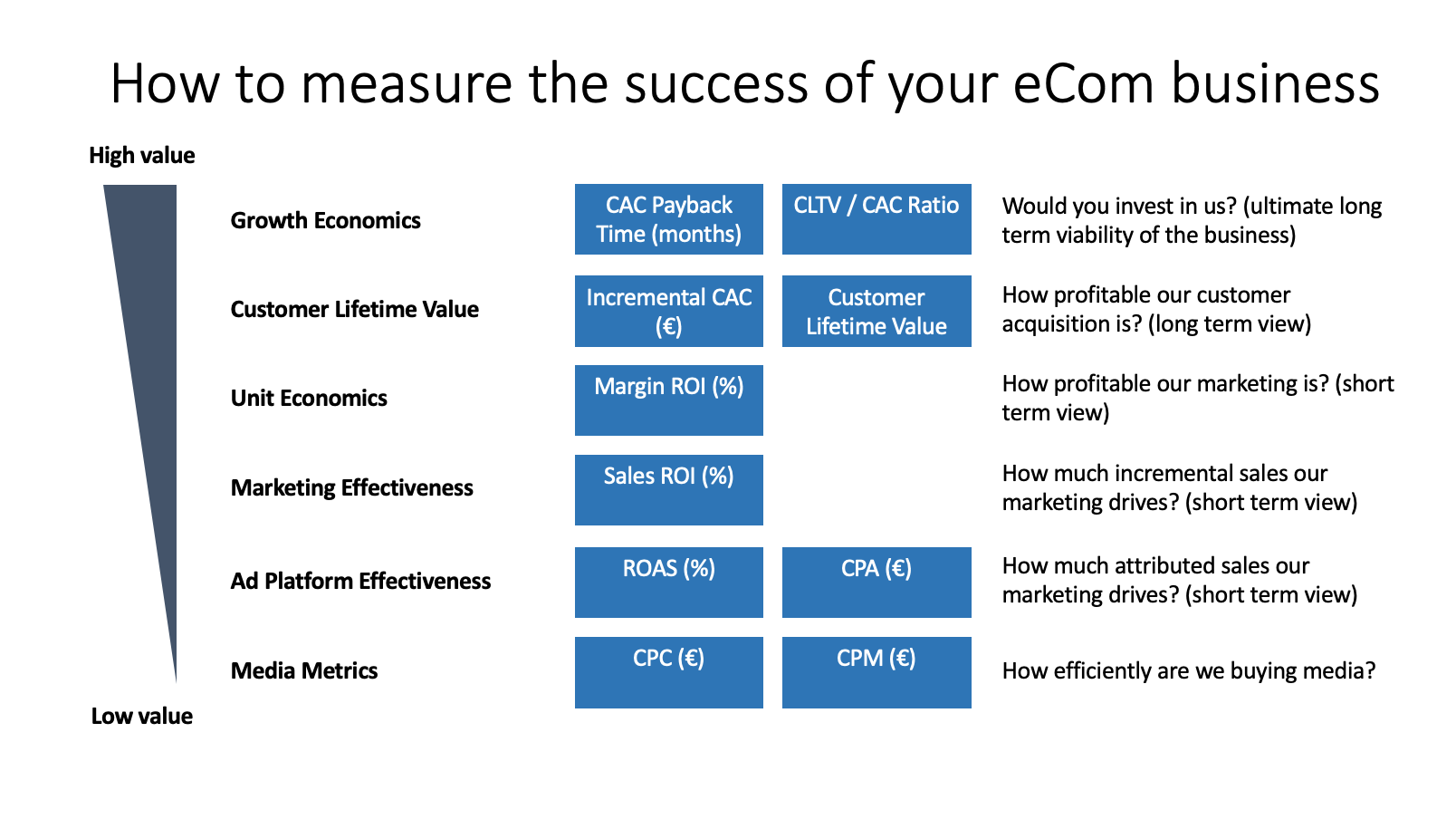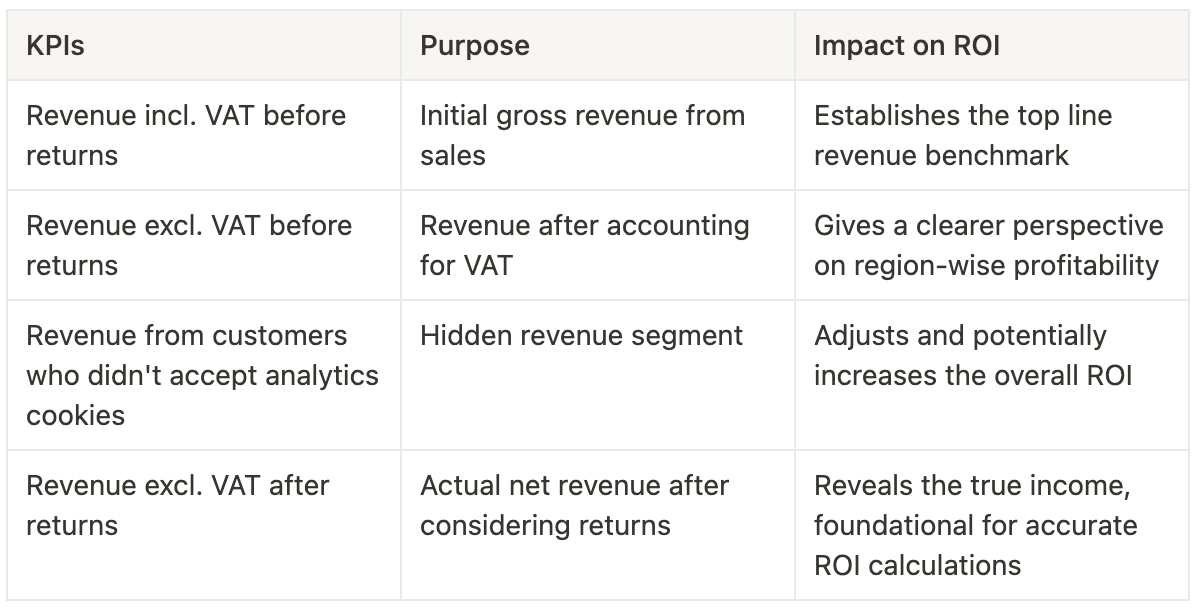Why Marketing Mix Modeling is relevant for E-com business?
The eCommerce market has grown by double digits for years, and in 2021 it accounted for approximately 19 percent of all retail sales worldwide. COVID-19 increased this growth even more so, and many of the traditional retailers have found themselves competing against eCommerce companies in the current situation.
The growth doesn’t come without its own challenges, however. The majority of eCommerce companies have built their marketing function on top of attribution modeling – a methodology that has been under fire lately – and are currently left with last-click results as the third-party cookies disappear.
The problem with last-click attribution is that it doesn’t tell anything about the incrementality of your media channels. And without understanding incrementality – what proportion of the channel-specific traffic is additional demand on top of the baseline results you would’ve got in any case – it is impossible to tell which channels to invest in to scale your growth.
Which is why Marketing Mix Modeling (MMM) is probably more relevant for eCommerce businesses than ever.
What is incrementality in marketing
Simply put, incrementality reveals the true performance of online advertisements. Incrementality is best understood through a brilliant story of Luigi’s pizzeria from the Correspondent's stellar article:
Luigi’s Pizzeria hires three teenagers to hand out coupons to passersby. After a few weeks of flyering, one of the three turns out to be a marketing genius. Customers keep showing up with coupons distributed by this particular kid. The other two can’t make any sense of it: how does he do it? When they ask him, he explains: "I stand in the waiting area of the pizzeria."
If we would look at the results with last-click attribution, the boy standing in front of the pizzeria would be a genius. He would be the channel with the best ROI, and without a doubt it would make sense to hire five boys with a similar mindset. Right?
If we would look at the results with last-click attribution, the boy standing in front of the pizzeria would be a genius. He would be the channel with the best ROI, and without a doubt it would make sense to hire five boys with a similar mindset. Right?
We all know that the answer is no. Because the demand the boy generates is not incremental, but demand that would’ve been there in any case.
None of the traditional attribution modeling tools (such as Google Analytics) we’ve seen measure the incremental uplift each channel generates, which is highly problematic when eCommerce businesses start to scale their investments and expect the sales to scale as well.
If you’re not measuring the incremental uplift of your media investments already, you should start today. And the easiest way is most likely to adapt Marketing Mix Modeling.
Why is incrementality especially relevant for eCommerce companies
As the point of sale is always digital in eCommerce, there is typically a good indication of where the customer came to the website before making the purchase. This is also the biggest pitfall marketers have fallen and keep on falling for, as it doesn’t tell whether that media channel sparked up the interest towards the offering – or if it was just the first channel that came up while googling for the company.
The most prominent example of this is branded search. Branded search is one of the most common marketing investments for e-commerce businesses, and for many marketers it’s also one of the best channels to invest in.
Except that it is not. Our tools just fake it to look like it.
This is because attribution models cannot measure the true incrementality of a digital media channel. The main issue is that digital attribution models have difficulty quantifying "incrementality." In particular, how many people who see an advertisement end up buying the product.
If we go back to the previous example, imagine a consumer walking to a boy next to the pizzeria and asking if this is Luigi’s pizzeria. Is that “conversion” truly attributable to the boy? Last-click attribution tools think so.
If we go back to the previous example, imagine a consumer walking to a boy next to the pizzeria and asking if this is Luigi’s pizzeria. Is that “conversion” truly attributable to the boy? Last-click attribution tools think so.
Typically this is because attribution models work with limited data:
- Too short timeframe --> Data might not include enough variation for the model to measure base demand and incremental uplifts accurately
- Not including all of the marketing activities --> For example Meta’s own analytics tools include only Meta’s own channels. Without seeing all of the marketing activities affecting the final outcome it is impossible for the model to provide accurate results
- Not including external datasets --> External events such as pandemics, weather and holidays can have a substantial effect on the base demand. Without factoring these effects into the model, the media uplift gets likely too high credit
As COVID-19 accelerated the already fast-growing eCommerce market, the ROAS for digital channels has climbed to unbelievably good levels. Getting to believably good results requires understanding what proportion of this growth is truly driven by media – so what is the incremental uplift for each media investment.
Bringing MMM next to attribution helps you understand where you get new sales because it shows the true uplift of each activity rather than just which channel people came from.
How does MMM measure incrementality?
MMM allows you to include all the relevant baseline datasets in order to calculate the baseline accurately. To establish a baseline, the MMM must first determine how much of the sales are a direct result of marketing efforts. In other words, the baseline can be defined as:
Total sales - Sales directly attributed to marketing conversions
After defining the baseline, the model can start to measure the incremental uplift of each channel with a comprehensive time-series analysis.
Without measuring incrementality, advertisers may continue to spend their advertising budgets on activities they believe are driving additional sales when in fact they are cannibalizing sales that would have occurred without the use of advertising. This can lead to the situation in which each channel ROAS looks super good, but we all know this isn’t realistic.
What else helps determine incrementality?
We believe that lift tests are a major factor in calculating the true incrementality of your investments. Lift tests are planned experiments in which your audience is divided into a control and test group at random. One can determine the actual causal incremental effect from the advertisements by only showing them to the test group.
We have a blog post that gives you an overview of why lift tests are beneficial (using Facebook as an example): https://sellforte.com/blog/why-should-you-calibrate-marketing-mix-modeling-results-with-facebook-lift-tests/
What about your current marketing measurement tools?
We assume you are using an array of solutions, such as attribution models or Google Analytics or others.MMM is there to replace your marketing analysis and planning strategy. MMM can help inform strategic decisions about resource allocation, produce more precise forecasts for future investments, and analyze the overall impact of marketing on sales by offering a data-driven perspective of marketing performance. MMM can be used to pinpoint the most profitable marketing strategies, discern the channels that have the biggest impact on sales, identify the customer groups that exhibit various purchasing patterns, and highlight the best advertising strategies. Additionally, MMM can assist marketers in comprehending how their choices affect their ROI and how adjustments to their marketing budget or activities may affect the overall effectiveness of their company.
MMM does not intend to replace all digital marketing measurement tools. The top marketers use the golden triangle of attribution models, lift tests and MMM to see the full picture of marketing effectiveness to their business.
Curious to learn more? Book a demo.
You May Also Like
These Related Stories
Marketing Mix Modeling in 2025: Five Trends for eCom/DTC Brands

How Can MMM Help Optimize eCommerce KPI Challenges?

